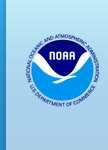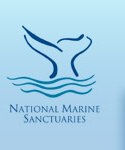Sanctuary Advisory Council Meeting Topics Include Lionfish, Marine Debris and Water Quality
Feb. 03, 2009
The Florida Keys National Marine Sanctuary Advisory Council (SAC) will meet February 17, 2009, at the Marathon Garden Club, 5270 Overseas Highway, Marathon beginning at 9:00 a.m.
Members of the public are encouraged to attend; there will be opportunities for public comment at 10:15 a.m. and 2:30 p.m.
The day-long meeting will feature reports from various SAC Working Groups in the morning, as well as presentations by the scientific community in the afternoon.
At 11:10 a.m., Lad Akins, Director of Special Projects for Reef Environmental Education Foundation (REEF), will provide an overview of the non-native species early detection and rapid response plan that aided responders in capturing the first lionfish in the Florida Keys in early January.
SAC member and Florida Institute of Oceanography (FIO) researcher Jon Fajans will present at 12:55 p.m. on a proposed project involving the removal of marine debris that has accumulated beneath and around the lighthouses of the Florida Keys.
At 1:30 p.m., sanctuary Associate Science Coordinator Scott Donahue will provide an update on the three core monitoring projects of the sanctuary’s Quality Protection Program: the Water Quality Monitoring Project, Seagrass Monitoring Program, and the Coral Reef Evaluation and Monitoring Program.
The SAC was established to provide the sanctuary, the National Oceanic and Atmospheric Administration (NOAA), and the State of Florida advice on implementation of the sanctuary’s final management plan. SAC members also serve as liaisons to the community regarding sanctuary issues. SAC members relay the community’s interests, concerns, and management needs to the sanctuary.
The sanctuary was established in 1990 in recognition of the special resources found in and around the waters of the Florida Keys. NOAA and the State of Florida jointly developed a comprehensive plan to protect and manage sanctuary resources. For more information, visit the Sanctuary’s web site at http://floridakeys.noaa.gov. A current list of SAC members may be found at http://floridakeys.noaa.gov/sac/members.html.


